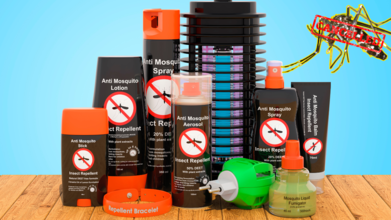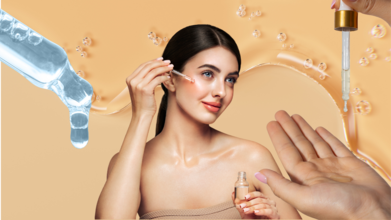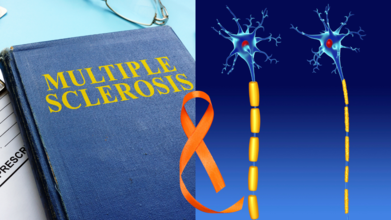- Health Conditions A-Z
- Health & Wellness
- Nutrition
- Fitness
- Health News
- Ayurveda
- Videos
- Medicine A-Z
- Parenting
- Web Stories
Monsoon, Mosquitoes And Measures: How To Safely Administer Mosquito Repellents To Ensure A Safe Rainy Season

Credits: Canva
The monsoon, while offering relief from summer heat, has brought with it a surge in mosquito-borne diseases. The national capital Delhi has reported over 277 dengue cases by July 28, according to Municipal Corporation of Delhi (MCD) data, higher than usual for this time of year. Just in the past week, 16 new dengue and 12 malaria cases were registered.
Officials attribute the spike to two key factors: the early onset of the monsoon and persistent waterlogging, which has created ideal breeding grounds for mosquitoes.
Globally, the picture is equally concerning. In the southern Chinese city of Foshan, chikungunya has infected around 8,000 people in four weeks, the country’s largest outbreak since 2008, prompting emergency containment measures and travel advisories from the U.S. Centers for Disease Control and Prevention (CDC), Canada, and Taiwan.
With no specific treatments for dengue or chikungunya, prevention is the only shield. One of the most accessible and effective tools remains mosquito repellent. But it must be used correctly.
Choosing the Right Repellent: What Works Best
“Mosquito repellents are a vital first line of defense, especially during monsoon, when stagnant water fuels breeding,” says Dr. Gaurav Jain, Senior Consultant, Internal Medicine, Dharamshila Narayana Superspeciality Hospital.
Repellent effectiveness depends on its active ingredient:
DEET (20–30%): Offers 6–8 hours of protection by forming a vapor barrier that confuses mosquitoes’ sense of smell.
Picaridin/Icaridin: Similar in duration to DEET, with a milder scent and less skin irritation.
Oil of Lemon Eucalyptus: Works immediately but lasts 4–6 hours.
Natural oils like citronella or neem: Limited protection, often under 2 hours, and less effective against Aedes aegypti.
Topical formats such as sprays, creams, and roll-ons remain the most reliable for direct skin protection. Creams last longer for outdoor workers, while sprays offer even coverage.
Mosquito coils and electric vaporizers can be useful indoors but should be used with caution due to potential respiratory risks. Wearable gadgets like citronella bracelets have limited scientific support, explains the doctor.
Special Guidance for Children, Pregnant Women, and Outdoor Workers
For children under two months, physical barriers like nets are safest. From two months onward, products with up to 30% DEET are safe if applied sparingly, recommends the doctor.
Pregnant women can safely use DEET and picaridin at recommended concentrations. Outdoor workers may benefit from long-lasting formulas and insecticide-treated clothing.
Safety Precautions: Dos and Don’ts
Do's:
Apply to exposed skin and clothing.
Wash treated skin after coming indoors.
Follow reapplication guidelines.
Combine repellents with nets or screened areas.
Dont's:
Apply under clothing.
Use coils in poorly ventilated rooms.
Let children apply repellents themselves.
Mix different repellents without guidance.
Why One Size Doesn’t Fit All
Different mosquito species have different biting patterns. For instance, Anopheles causes malaria mainly at night, Aedes aegypti causes dengue and chikungunya during the day. Adjusting protection times and repellent concentration based on species and activity hours improves effectiveness.
Repellents Work, But Only as Part of a Larger Strategy
Recent Indian Council of Medical Research (ICMR) studies show that DEET, picaridin, and oil of lemon eucalyptus can reduce bites by over 90% when used correctly. Still, Dr. Jain warns: “Repellents are most effective when combined with broader mosquito control, like eliminating stagnant water, using treated nets, and community awareness.”
With early rains and rising global outbreaks, experts say consistent and correct repellent use could make the difference between a safe monsoon and a dangerous one.
3-Day Mindfulness Challenge: Recharge Without Stepping Out This Long Weekend

Credits: Canva
If your idea of a long weekend usually involves binge-watching a drama series, mindless scrolling, and wondering why you are still in pyjamas at 4 pm, you are not alone. But what if you could come out of these three days feeling lighter, calmer, and maybe even more alive, without leaving your home? From Independence Day to Krishna Janmashtami on 16 August, followed by your favourite Sunday, take some time out for yourself and prioritise your wellbeing. This 3-day mindfulness challenge might open doors to great things, because when you destress and relax, you give space to creativity and better imagination.
Take up this 3-day mindfulness challenge and you do not need a passport; just you, your space, and a few intentional choices.
Why mindfulness, and why now?
We live life like we are running late for a bus we never actually catch, juggling to-do lists, work deadlines, and the background hum of anxiety. Dr Narendra K. Shetty, a consultant in mindfulness practices, puts it plainly:
“In our daily life we are running behind distractions and never-ending to-do lists… practising mindfulness helps us to overcome stress and find mental peace.”
Mindfulness, he explains, is “the basic human ability to be fully present, aware of where we are and what we are doing, and not overly reactive or overwhelmed by what is going on around us.”
And if you are wondering whether it is just another buzzword, science says otherwise. Research links mindfulness to reduced stress, better immunity, sharper brain function, and even healthier eating habits.
Day 1: Wake up, breathe, repeat
Before you check your phone, spend a few moments acknowledging that you woke up today. That simple gratitude shifts your brain chemistry towards positivity.
Nidhi Nahata, lifestyle coach, suggests beginning with “the smallest choices”, a glass of water sipped slowly, feeling it cleanse you from within, or opening your windows to let fresh air remind you of the world’s kindness.
From there:
- Mindful waking — Sit up in bed, notice how your body feels, and stretch like you mean it.
- Balcony breathing — Inhale deeply for four counts, exhale for six. Let your mind follow your breath.
- Nature gaze — Even if your view is just potted plants, watch them for a few minutes. Nature doesn’t rush — maybe neither should you.
Day 2: Move, eat, and live like you mean it
You do not need a gym session; mindful walking around your home counts. Feel your feet connect with the floor, notice your weight shift, and hear the subtle sounds you usually tune out.
When it comes to food, both experts agree: mindful eating is a game changer. Dr Shetty recommends a “colourful platter” because the more variety you see, the more nutrients you get. Nidhi suggests choosing food that is “alive”, fresh fruits, crisp salads, and meals planned ahead so you are nourishing, not neglecting, yourself.
Try this:
- Eat one meal without screens. Chew slowly, taste each bite, and notice textures.
- Take a digital detox for an hour — or, if you are brave, half a day.
- Ground yourself while walking barefoot on a safe surface, noticing each sensation.
Day 3: Clear the clutter — inside and out
Your surroundings affect your mental state more than you think. Nidhi suggests tending to your home “as you would to a loved one with care, with presence… clear spaces not just of dust, but of stagnant energy that weighs you down.”
This is also the perfect day to reconnect with people, not just your family and friends, but those who are part of your everyday rhythm. Ask your security guard how his morning was, or thank the delivery person. Listen without rushing. As Nidhi says, “In those stories, you will find a mirror of humanity — raw, real, and unfiltered.”
Dr Shetty’s advice here is simple but powerful: take five minutes every hour to check in with yourself. “Spend it on yourself to have a better life in the future,” he says. That could be stretching, sipping tea in silence, or simply breathing with awareness.
The magic isn’t in the grand gestures
Mindfulness is not about sitting cross-legged for hours while incense burns. It is about micro-moments of awareness sprinkled through your day. It is pausing before reacting to an annoying email, feeling the sun on your skin when you hang laundry, or laughing wholeheartedly at a silly joke.
As Nidhi reminds us, “Mindfulness is not a skill to master; it is the way life was always meant to be. Somewhere, in the rush of doing, we forgot how to simply be.”
Your 3-day cheat sheet
- Morning: Gratitude → Breathwork → Screen-free breakfast
- Afternoon: Mindful movement → Colourful, fresh meal → Digital detox hour
- Evening: Declutter a space → Connect with someone → Gentle stretching before bed
Repeat these patterns in any order. The more you weave them in, the more natural they feel.
Why this works even after the weekend
Think of these three days as a soft reset for your nervous system. Dr Shetty sums it up beautifully: “The goal of mindfulness is to wake up to the inner workings of our mental, emotional, and physical processes.” And once you have woken up to that, it is hard to go back to autopilot.
Or, as Nidhi puts it, “Sometimes, the most powerful journey is the one that brings you home.” So this weekend, instead of letting the days blur together in a haze of screens and snacks, try letting them sharpen your senses, calm your mind, and remind you that life is happening right here, right now.
The Science Behind Multi-Peptide Serums: Can They Really Slow Skin Ageing? Experts Weigh In

Credits: Canva
When it comes to skincare, there is always a new “miracle” in a bottle. One year it is snail mucin, another it is fermented rice water, and now, multi-peptide serums are making their way onto bathroom shelves, promising to keep our skin plump, firm, and suspiciously smooth for our age. But are they the real deal, or just another beauty fad? We turned to experts to find out.
What Exactly Are Peptides?
In the simplest terms, peptides are short chains of amino acids. Think of them as the Lego pieces that build proteins like collagen, elastin, and keratin, the big names responsible for keeping our skin bouncy, firm, and resilient.
“Peptides are the building blocks of collagen and elastin,” explains Dr Katheeja Nasika, Consultant, Department of Dermatology, Rela Hospital, Chennai. “Signalling peptides like palmitoyl pentapeptide stimulate fibroblasts to produce more collagen and elastin, while carrier peptides such as copper peptides help deliver trace elements that support tissue repair and offer antioxidant defence against UV damage.”
What Are Multi-Peptide Serums?
Single peptides target one problem at a time, but multi-peptide serums? They are the multi-taskers who answer emails, bake banana bread, and run 5Ks before breakfast.
“Multi-peptide serums have diverse peptides like signal peptides, carrier peptides, and enzyme inhibitors,” says Dr S. Sooriya, Consultant Dermatologist and Dermatosurgeon, SRM Global Hospitals, Chennai. “Signal peptides encourage more collagen and elastin, carrier peptides deliver essential minerals like copper and manganese to help skin heal and regenerate, and enzyme inhibitors slow down the breakdown of existing collagen.”
This triple-action approach means multi-peptide serums can, in theory, target fine lines, sagging, dullness, and skin repair all at once.
Are Peptides As Powerful As Retinoids?
While peptides are promising, they are more of the slow-and-steady marathon runners of the anti-ageing race, whereas retinoids are the sprinters, showing visible changes faster.
“Peptides are not as potent as retinoids,” says Dr Katheeja. “However, they can be a good alternative for people with sensitive skin or those who cannot tolerate retinoids. They can also be cycled along with retinoids for better results.”
Dr Sooriya agrees: “Peptide research is still relatively new compared to retinoids, which have decades of evidence behind them. But with consistent use over 8 to 12 weeks, you can expect improvements in skin texture, plumpness, and reduced fine lines.”
How to Get the Best Out of Your Peptide Serum
Peptides are like that one friend who works best when combined with other actives. “Combining peptides with hyaluronic acid and vitamin C can have synergistic effects,” says Dr Katheeja. “They also work best as part of a complete anti-ageing skincare routine that includes sunscreen, antioxidants, a balanced diet, and healthy lifestyle habits.”
Peptides would not save your skin if you are still skipping sunscreen, surviving on instant noodles, and sleeping four hours a night.
Who Should Try Multi-Peptide Serums?
If your skin is sensitive or prone to irritation, or you have had bad experiences with strong actives, peptides could be your new skincare BFF. “They are mild and safe to use alongside other gentle acids if combined properly,” says Dr Sooriya. “They would not irritate or burn the skin like stronger actives sometimes do.”
And because they are generally well-tolerated, peptides are ideal for anyone who wants gradual, cumulative improvements without downtime or peeling.
Gentle, Consistent, and Worth the Hype
Peptides would not turn back time or erase a decade of sun damage overnight, but they can help your skin look smoother, firmer, and healthier over time.
“They offer a gentle yet effective approach to supporting skin health and fighting visible signs of ageing,” says Dr Katheeja. “By restoring collagen and elastin production or delivering essential trace elements, they improve firmness, resilience, and overall texture.”
Dr Sooriya puts it even more plainly: “They would not make your skin younger right away, but they can help keep it looking better when combined with other good skincare practices.”
7 Multiple Sclerosis Myths You Need to Stop Believing Right Now

Credits: Canva
Did you know? Multiple sclerosis (MS) can begin affecting the body many years before clear symptoms appear, often going unnoticed until the condition is well established. According to researchers at the University of British Columbia, people start using healthcare services more often as far as 15 years before their first obvious MS signs.
Fatigue, anxiety, and mild depression may quietly creep in, but they are often dismissed or blamed on life’s usual chaos. The trouble is, the myths swirling around MS are even more persistent than the symptoms. Some are outdated, some are just plain wrong, and all need to be shown the door.
Here is a myth-busting guide to separate MS fact from fiction.
Myth 1: Everyone with MS eventually needs a wheelchair
Nope. The MS Society says most people never use one. Reportedly, even 15 years post-diagnosis, only about 20 per cent need a wheelchair, cane, or crutches. And for those who do, mobility aids can mean freedom, not limitation, a tool to stay independent rather than a sign of defeat.
Myth 2: People with MS cannot work
Completely untrue. Many continue thriving in their careers for years. The National Multiple Sclerosis Society points out that while some may adjust their work or hours, legal protections, medical advances, and supportive tech keep many in the workforce. In fact, employment often provides structure, identity, and social connection, all of which can benefit mental health.
Myth 3: People with MS should not exercise
On the contrary, exercise is not only safe; it is encouraged. Supervised and personalised workout programmes can improve fitness, mobility, and quality of life. The National Multiple Sclerosis Society suggests aiming for at least 150 minutes of exercise or active living a week, building up slowly and safely.Myth 4: If symptoms are minor, there is no need for medication
Tempting logic but flawed. MS is a progressive disease, and even mild symptoms can mask deeper nerve damage. Research shows early treatment can slow disease progression and improve long-term outcomes. Waiting for symptoms to worsen is a gamble you do not want to take.
Myth 5: People with MS should not get pregnant
False. The Multiple Sclerosis Trust confirms MS does not increase miscarriage risk or cause birth defects. Pregnancy often reduces relapse rates, though the risk rises again in the six months after delivery. MS does not affect fertility, and having children doesn’t worsen long-term disability.Myth 6: If I have MS, my children will get it too
While genetics play a role, MS is far from guaranteed for the next generation. Identical twins share only a 20–40 per cent risk; for non-identical twins, it is 3–5 per cent. The MS Society says 1 in 67 children of a parent with MS will develop it, compared with 1 in 500 in the general population.
Myth 7: MS is always fatal
Definitely not. MS may shorten life expectancy by around seven years, but research suggests that gap is closing as treatments advance. While it is a lifelong condition, most people with MS live long, full lives, especially with early diagnosis and good symptom management.Led by Dr. Marta Ruiz-Algueró, a postdoctoral fellow at UBC, the recent study analysed the medical histories of 2,038 Canadians with MS and compared them to more than 10,000 people without the condition. Using detailed administrative and clinical records that spanned 25 years, researchers tracked how often patients visited healthcare providers before their first classical MS symptoms.
Also Read: Can THIS Naturally Occurring Element Treat Alzheimer's
15 years before diagnosis, people who later developed MS were already visiting general practitioners more frequently. Their complaints often centred on fatigue, pain, dizziness, headaches, and mental health concerns like anxiety and depression.
How MS Works?
Multiple sclerosis is like a case of mistaken identity; your immune system thinks your nerves are the enemy and starts attacking the protective coat they wear, called the myelin sheath. This sparks inflammation, leaves behind tiny scars and scrambles the brain’s messaging system to the rest of your body.The symptoms can include:
- Fatigue
- Odd tingling or numbness that shows up anytime
- A wobbly sense of balance or coordination
- Vision that suddenly decides to play tricks on you
- Muscles that feel like they have gone on strike
- Memory and thinking skills that sometimes wander off mid-task
In a nutshell, MS is a bit of a medical puzzle which is unpredictable and complicated and is still keeping scientists on their toes. But with sharper tools to spot it, smarter treatments to tackle it, and a lot more awareness than in decades past, living with MS today is a very different story. Busting these myths is not just about tidying up the facts; it is about handing people the knowledge to live well, keep working, love fiercely, and get on with life without unnecessary fear attached.
© 2024 Bennett, Coleman & Company Limited

